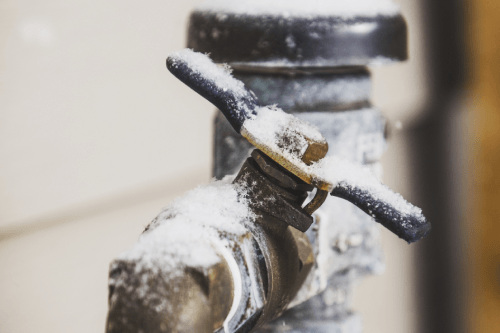Ways to Safeguard Your Plumbing from Freezing: Essential Strategies
Ways to Safeguard Your Plumbing from Freezing: Essential Strategies
Blog Article
We have come across this great article about Winter Plumbing Precautions: Preventing Frozen Pipes directly below on the net and felt it made perfect sense to discuss it with you here.

Winter can damage your pipes, specifically by freezing pipes. Right here's exactly how to avoid it from taking place and what to do if it does.
Introduction
As temperature levels drop, the threat of frozen pipelines rises, possibly bring about pricey repair work and water damages. Recognizing exactly how to avoid frozen pipes is vital for house owners in chilly environments.
Recognizing Icy Pipes
What creates pipes to freeze?
Pipelines ice up when subjected to temperatures listed below 32 ° F (0 ° C) for extended durations. As water inside the pipes ices up, it broadens, putting pressure on the pipeline wall surfaces and potentially creating them to burst.
Dangers and damages
Frozen pipes can cause water disruptions, property damage, and expensive repairs. Burst pipelines can flooding homes and create substantial structural damages.
Indicators of Frozen Water Lines
Recognizing frozen pipelines early can prevent them from rupturing.
How to recognize frozen pipelines
Look for lowered water flow from taps, unusual odors or sounds from pipes, and noticeable frost on subjected pipes.
Avoidance Tips
Shielding at risk pipelines
Wrap pipelines in insulation sleeves or make use of warm tape to safeguard them from freezing temperature levels. Concentrate on pipes in unheated or outside locations of the home.
Heating techniques
Keep interior spaces appropriately heated, especially areas with plumbing. Open cabinet doors to permit cozy air to flow around pipelines under sinks.
Safeguarding Outside Plumbing
Garden hose pipes and outside faucets
Disconnect and drain yard tubes prior to winter months. Mount frost-proof spigots or cover outside taps with shielded caps.
What to Do If Your Pipelines Freeze
Immediate activities to take
If you believe icy pipes, keep faucets open to soothe pressure as the ice melts. Use a hairdryer or towels taken in warm water to thaw pipes gradually.
Long-Term Solutions
Architectural changes
Consider rerouting pipelines far from exterior wall surfaces or unheated locations. Add additional insulation to attics, cellars, and crawl spaces.
Updating insulation
Purchase premium insulation for pipelines, attics, and wall surfaces. Proper insulation assists keep regular temperatures and minimizes the threat of frozen pipes.
Final thought
Preventing frozen pipes needs aggressive steps and fast feedbacks. By recognizing the causes, signs, and preventive measures, property owners can safeguard their pipes throughout winter.
6 Proven Ways to Prevent Frozen Pipes and Protect Your Home
Disconnect and Drain Garden Hoses
Before winter arrives, start by disconnecting your garden hoses and draining any remaining water. Close the shut-off valves that supply outdoor hose bibs and leave the outdoor faucet open to allow any residual water to drain. For extra protection, consider using faucet covers throughout the colder months. It’s also important to drain water from any sprinkler supply lines following the manufacturer’s directions.
Insulate Exposed Pipes
Insulating your pipes is an effective way to prevent freezing. Pipe insulation is readily available at home improvement stores and is relatively inexpensive. Pay close attention to pipes in unheated areas such as the attic, basement, crawl spaces, or garage. Apply foam insulation generously to create a buffer against the cold. You can also wrap your pipes in heat tape or thermostat-controlled heat cables for added warmth.
Seal Air Leaks
Inspect your home for any cracks or openings that could let in cold air. Seal any holes around the piping in interior or exterior walls, as well as the sill plates where your home rests on its foundation. Additionally, make sure to keep your garage door closed unless you’re entering or exiting. Leaving it open creates a significant air leak that can lead to frozen pipes.
Allow Warm Air Circulation
During cold snaps, it’s essential to allow warm air to circulate evenly throughout your home. Leave interior doors ajar to promote better airflow. Open kitchen and bathroom cabinets to help distribute heat consistently around the rooms. If you have small children or pets, be sure to remove any household chemicals or potentially harmful cleaners from open cabinets for safety.
Let Faucets Drip
A small trickle of water can make a big difference in preventing ice formation inside your pipes. When temperatures drop significantly, start a drip of water from all faucets served by exposed pipes. This continuous flow helps prevent the water from freezing. Additionally, running a few faucets slightly can relieve pressure inside the pipes, reducing the chances of a rupture if the water inside does freeze.
https://choateshvac.com/6-proven-ways-to-prevent-frozen-pipes-and-protect-your-home/
:strip_icc()/snow-outdoor-faucet-pipes-4af65d1e5e904fb1aa7bf74071fe5d89.jpg)
We had been shown that write-up about How To Avoid Freezing Pipes from a friend on our other web address. If you appreciated our article kindly consider to pass it around. We truly appreciate your readership.
Browse Website Report this page